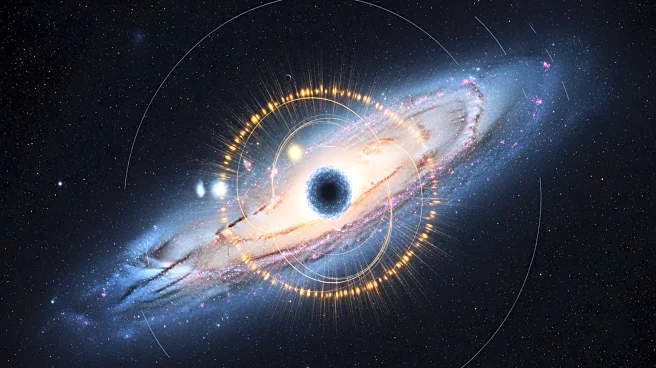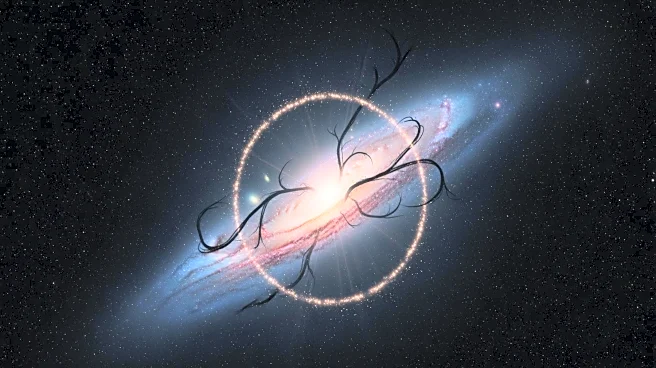What's Happening?
Astrophysicists from the Leibniz Institute for Astrophysics Potsdam have proposed a new explanation for a mysterious gamma-ray glow observed at the center of the Milky Way. The team, led by Moorits Muru, utilized advanced computer simulations to suggest
that this glow could be a signature of dark matter, a substance that makes up about 27% of the universe's matter but remains undetected by traditional means. The simulations indicate that dark matter near the Milky Way's center may not form a perfect sphere as previously thought, but rather an egg-shaped structure. This shape aligns with the pattern of gamma rays detected by NASA's Fermi Gamma-ray Space Telescope, which has puzzled scientists since its discovery in 2008. The study suggests that the glow could result from dark matter particles, known as WIMPs, colliding and annihilating each other, although the possibility of it being caused by millisecond pulsars remains.
Why It's Important?
The potential identification of dark matter as the source of the Milky Way's gamma-ray glow could mark a significant breakthrough in astrophysics, providing indirect evidence of WIMPs, a leading dark matter candidate. This discovery could reshape our understanding of the universe's composition and the role of dark matter in galaxy formation. If confirmed, it would validate decades of theoretical work and experimental efforts aimed at detecting dark matter. The findings could also influence future research directions and funding allocations in cosmology and particle physics, as scientists seek to further explore and confirm the nature of dark matter. The implications extend to our broader understanding of the universe, potentially unlocking new insights into its origins and evolution.
What's Next?
The next steps involve further observations and experiments to distinguish between the dark matter and pulsar hypotheses. The upcoming Cherenkov Telescope Array Observatory, set to begin operations in the late 2020s, will play a crucial role in this endeavor. It will offer higher resolution gamma-ray observations, potentially allowing scientists to differentiate between the energy signatures of pulsars and dark matter particles. Additionally, gamma-ray studies of smaller dwarf galaxies orbiting the Milky Way, which also contain dense pockets of dark matter, could provide further evidence. These efforts aim to conclusively determine the source of the gamma-ray glow and advance our understanding of dark matter.
Beyond the Headlines
The pursuit of dark matter detection is not only a scientific challenge but also a philosophical one, as it touches on fundamental questions about the universe's nature and our place within it. The elusive nature of dark matter has made it a subject of intrigue and speculation, driving technological advancements in detection methods and international collaborations. The potential confirmation of dark matter's role in the Milky Way's gamma-ray glow could inspire a new generation of scientists and spark public interest in astrophysics, highlighting the importance of continued investment in space research and exploration.













